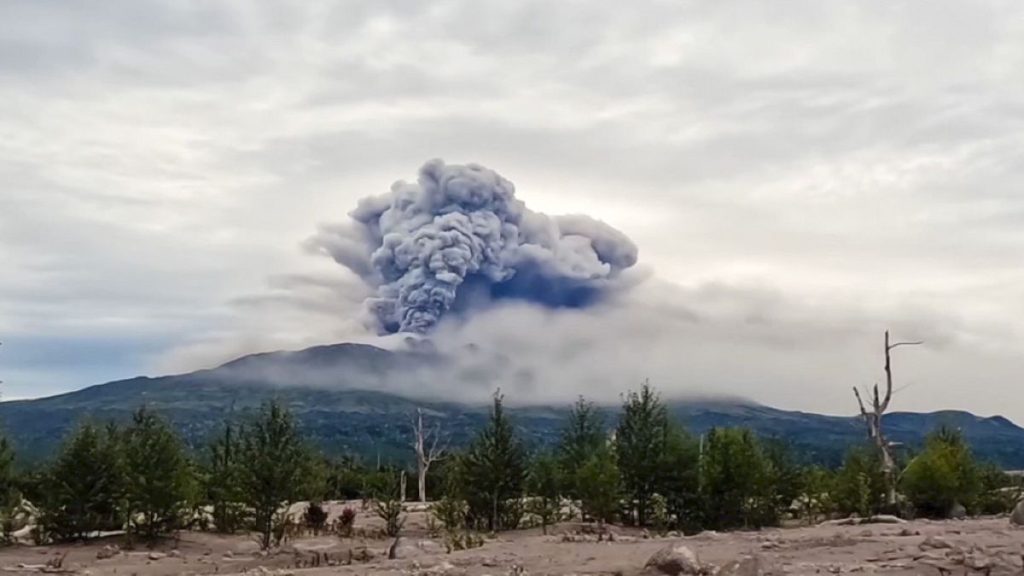The Shiveluch volcano in Russia erupted on Sunday, sending plumes of ash 5 kilometers into the sky over the Kamchatka Peninsula. The eruption was triggered shortly after a powerful 7.0-magnitude earthquake struck off the east coast of Kamchatka. The Institute of Volcanology and Seismology released a video showing the ash cloud over Shiveluch, which extended over 490 kilometers to the east and southeast of the volcano. The Ebeko volcano on the Kuril Islands also erupted, spewing ash 2.5 kilometers high. A “code red” warning for ash clouds was briefly issued for aircraft in the area, but there were no reported disruptions to commercial flights or damage to aviation infrastructure.
Russian scientists warned of the possibility of a stronger earthquake in southeastern Kamchatka following the initial tremors. The Institute of Volcanology stated that a potential second quake could occur within 24 hours with a magnitude approaching 9.0. The earthquake on Sunday occurred at a depth of 6 kilometers under the sea bed, with the epicenter located 108 kilometers southeast of the nearest city. Although there were no immediate reports of injuries, residents of Petropavlovsk-Kamchatsky, a port city with over 181,000 people, reported experiencing some of the strongest shaking in a long time. The last earthquake of similar magnitude in Kamchatka in 1952 caused damage but no reported deaths, despite generating 9.1-meter waves in Hawaii.
The eruption of the Shiveluch volcano and the earthquake off the coast of Kamchatka have raised concerns about the potential impact on the region. The ash cloud from the volcano reached significant heights, affecting aircraft operations in the area temporarily. The eruption of the Ebeko volcano on the Kuril Islands also contributed to the ash cloud, although it is unclear if the earthquake directly triggered the eruptions. As seismic activity continues in the region, experts are monitoring the situation closely, warning of the possibility of a stronger earthquake within the next 24 hours.
The volcanic activity in Kamchatka highlights the region’s susceptibility to natural disasters, given its location along the Pacific Ring of Fire. The Shiveluch volcano is one of the most active in Russia and has a history of significant eruptions. The earthquake that struck off the coast of Kamchatka underscores the seismic hazards in the area, with the potential for larger quakes to follow. The proximity of Petropavlovsk-Kamchatsky to the epicenter raises concerns for the safety of residents and infrastructure in the event of further seismic events.
The response to the volcanic eruption and earthquake in Kamchatka has been swift, with the issuance of warnings and alerts to mitigate the potential impact on the region. The Kamchatka Volcanic Eruption Response Team issued a “code red” warning for ash clouds, prompting aircraft in the area to be on alert. Despite the concerns raised by the seismic activity, there have been no reported injuries or damage thus far. However, the possibility of a stronger earthquake in the coming hours has prompted increased vigilance among residents and authorities in the region to ensure preparedness and safety measures are in place.
Overall, the eruption of the Shiveluch volcano and the earthquake off the coast of Kamchatka have highlighted the complex and volatile nature of geological events in the region. As Russian scientists continue to monitor the situation and prepare for potential further seismic activity, the safety and well-being of residents in Kamchatka remain a top priority. The history of past natural disasters in the area serves as a reminder of the importance of disaster preparedness and response in mitigating the impact of future events.


